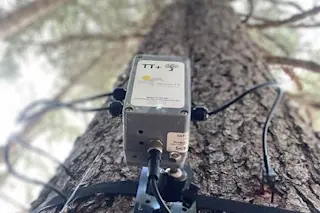Whenever a solar eclipse occurs, life seems to stand still for a brief moment. Humans watch the sky, animals display eccentric behaviors, but what about plants? It turns out that plant life has its own patented way of dealing with this astronomical event. A new study has shown that trees react to solar eclipses and even anticipate them hours in advance, synchronizing their bioelectrical signals in preparation.
The study, published in the journal Royal Society Open Science, details this hidden power that comes ingrained in biological code of trees. The results reveal the amazing collective potential of trees, deepening our understanding of plants and their complex identity.
The influence of solar eclipses on organisms has mostly focused on animals rather than plants. Scientists took advantage of the 2017 and 2024 total solar eclipses to refresh their understanding of animal reactions to a darkening sky and cooling temperatures.
During these events, ...















